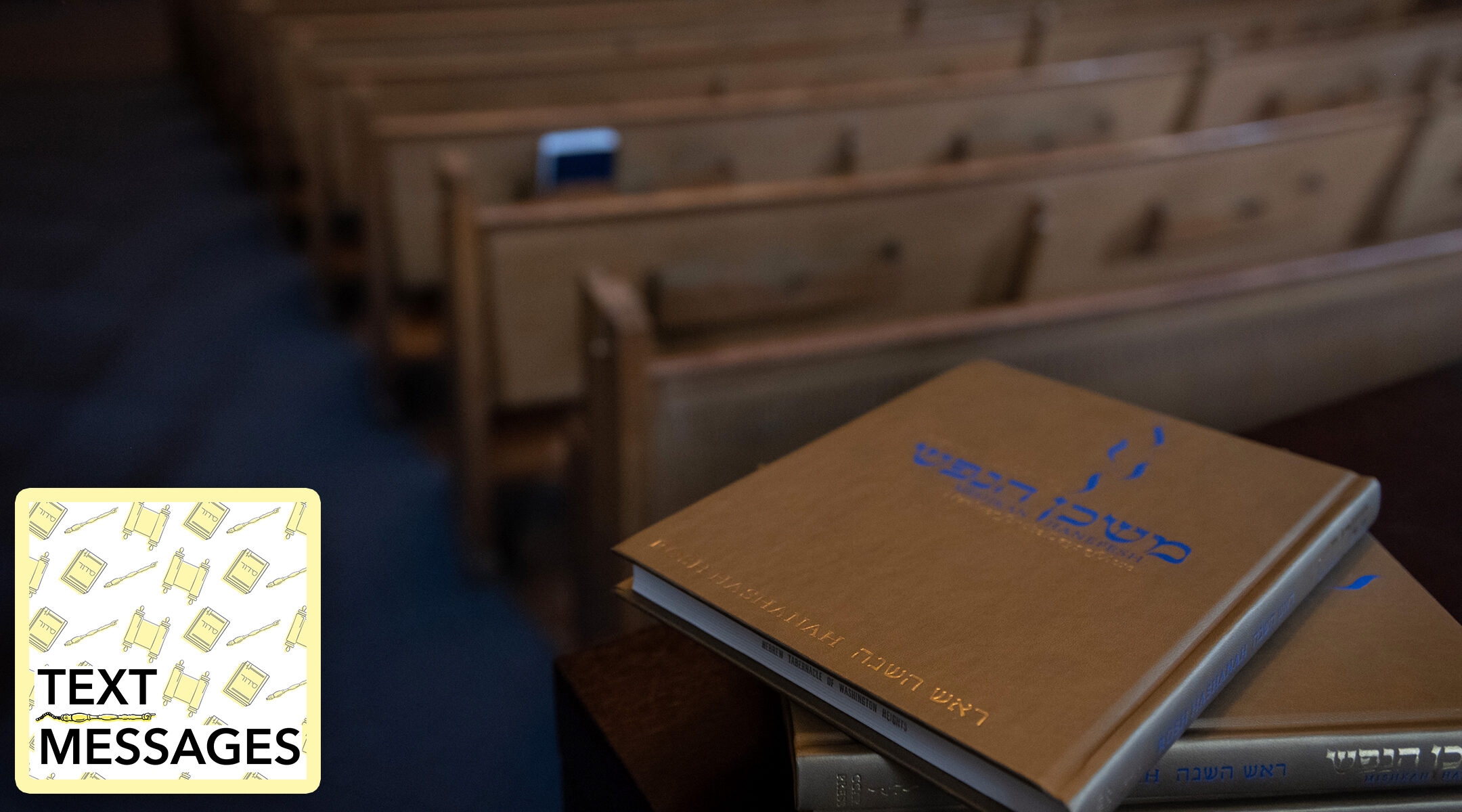Text Messages is a column sharing wisdom from the weekly Torah portion produced with The Jewish Week.
(JTA) — In hushed voices, rabbis and lay leaders have begun asking a question that scares them: When this pandemic is past, will people come back to shul?
It won’t be easy, they fear, to put the genie back in the bottle.
Of course there are those who can’t wait to get back to their synagogues. But many folks are also talking and writing about how they’ve become accustomed to the idea of the shul-less life. They can daven (pray) at their own pace, on their own schedule. They quite enjoy the limitless opportunities to attend services or classes on Zoom. And particularly for those who lean toward introversion, they quite prefer the quiet of Shabbat at home to the buzz of a crowded kiddush.
So how do we respond to the implicit question: When it’s safe to return, why would we go back?
From a pragmatic perspective, we can appreciate that there are many answers. Not everyone can pray alone; communal services guide us. Zoom is perfectly adequate for sharing information, but there’s no empathy online. A virtual service can’t make us laugh or cry. Inspiration is harder to come by outside the walls of the synagogue.
The list goes on: What about the kids? How do we model rich Jewish living when the only Jewish life they see is in the home? How many children get more attached to Jewish life by not going to shul?
These practical considerations may be compelling enough, but I want to highlight three value propositions — three indispensable aspects of synagogue life — that derive from our parsha this week and the Torah’s first description of the mishkan, or tabernacle.
The notion of community serves as the animating force behind the project of building the mishkan. In describing its construction, the Torah tells us that God said, “And they shall make for Me a sanctuary so that I may dwell within them” (Exodus 25:8). Rabbi Moshe Alshich (1508-1593) notes that, conspicuously, the verse does not read “and I shall dwell within it.” It’s not the edifice that brings holiness into this world. It’s the people. An institution absent its adherents is no institution at all. It’s by virtue of coming together as a community that we bring holiness into our lives. That’s why even the sage Hillel, who was tolerant of virtually everyone, had no tolerance for those who dissociated from the collective (Pirkei Avot 2:4).
At a time when individualism has become such a pervasive ethic, shul life was and remains one of the last bastions of communitarianism: a place where other people rely on us; where our participation matters; where we’re not in charge of the schedule; where we can’t predict whether you’ll feel comforted or inspired. It’s a place where we surrender a little piece of our autonomy in exchange for the opportunity to belong.
Synagogues promote the culture of contribution that we need to combat the rampant sense of consumerism. Membership at the gym or the club is transactional and self-referential. It’s about how much value I can derive from the institution. Membership at the shul is about how much value I can contribute to the institution. We join because we have something to add.
Think of the Israelites in the wilderness. Here were former slaves so habituated to self-preservation that they could scarcely resist the temptation to hoard manna from heaven. And yet given the opportunity to contribute to a communal project, they over-gave (Exodus 36:3-6). Left to their own devices, the Israelites fended for themselves. Given a communal purpose, they bounded forth with enthusiasm.
Well-intentioned as we may be, we need prompts and reminders to grow our tzedakah (philanthropy) and chesed (benevolence) muscles. It’s in shul — surrounded by people with needs different than our own — that we have the opportunity to become Jews who give.
Finally, synagogues argue for aspiration over contentedness. By its very nature, the tabernacle was meant to be a provisional sanctuary, a portable temple until such time as a permanent structure could be erected in Jerusalem. Just to see it was to be reminded that our destination had not yet been reached, our goal not yet achieved.
Such is part of the very purpose of the contemporary synagogue. Membership makes demands of us and creates expectations. It insists that we have aspirations that are larger than any one person. Stay-at-home Jews risk coasting through Jewish life on autopilot. Synagogue Jews are marching toward a Promised Land.
In the course of Jewish history, there may have been individuals who survived in isolation. But those who thrived did so under the shelter of Jewish communities and within the embrace of Jewish institutions.
Of course there are lessons to be learned from these past months. There’s no mitzvah to return to exactly the ways things were. But there’s surely a mitzvah to return. What a loss it would be if everyone just kept davening in their living rooms or even in their local backyard minyans. These were stopgap measures that served important functions under expedient circumstances. But they don’t constitute the long-term future of the Jewish people.
We may not be prophets. But as the Talmud reminds us, we are descended from prophets. We can’t say with any degree of certainty what post-COVID Jewish life will look like. But we can say that we will be infinitely poorer as a people if we neglect the institutions most central to our identities. Our synagogues have been there for us in our times of need. Let’s make sure we are there for them in theirs.
JTA has documented Jewish history in real-time for over a century. Keep our journalism strong by joining us in supporting independent, award-winning reporting.







